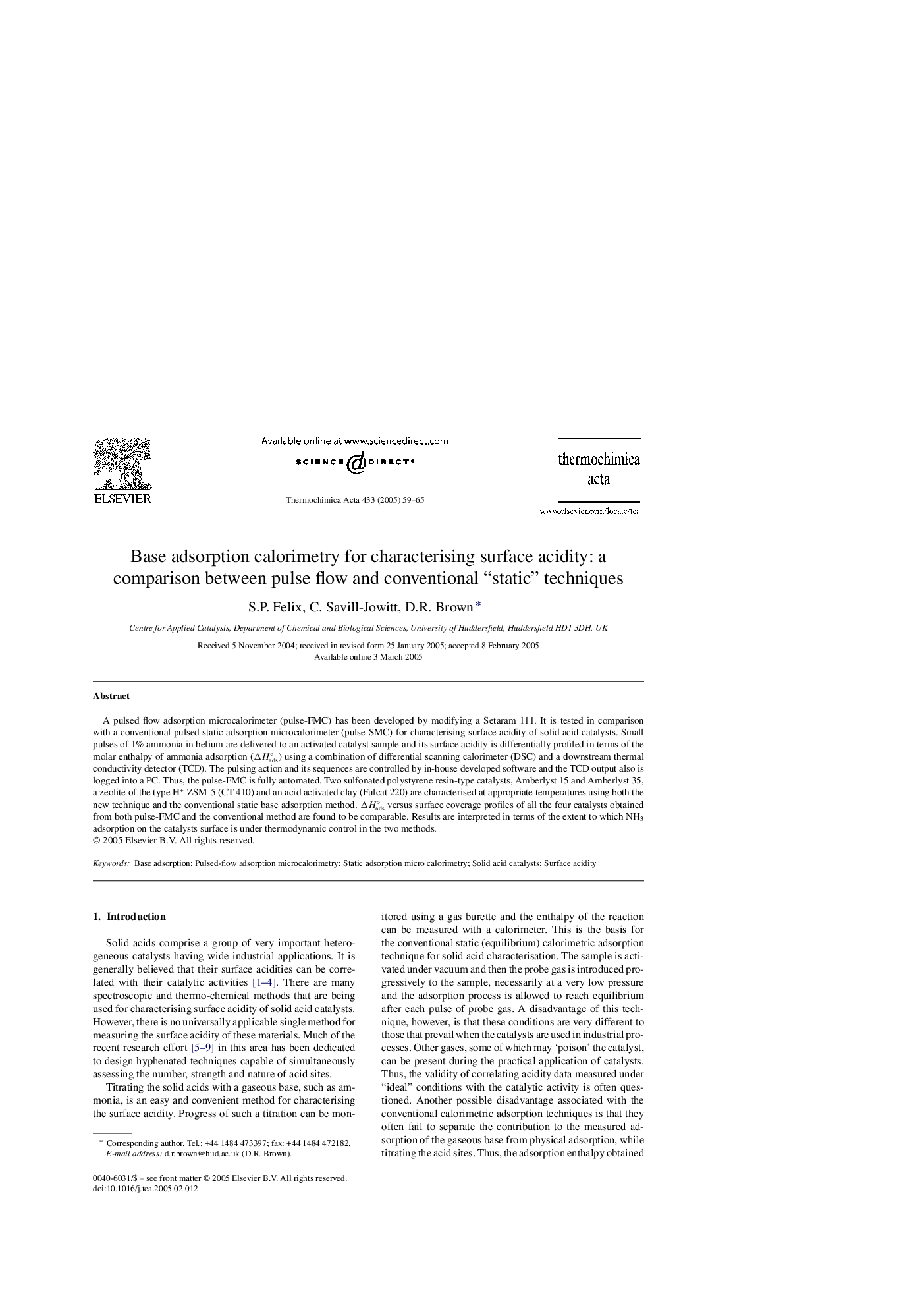| Article ID | Journal | Published Year | Pages | File Type |
|---|---|---|---|---|
| 9694050 | Thermochimica Acta | 2005 | 7 Pages |
Abstract
A pulsed flow adsorption microcalorimeter (pulse-FMC) has been developed by modifying a Setaram 111. It is tested in comparison with a conventional pulsed static adsorption microcalorimeter (pulse-SMC) for characterising surface acidity of solid acid catalysts. Small pulses of 1% ammonia in helium are delivered to an activated catalyst sample and its surface acidity is differentially profiled in terms of the molar enthalpy of ammonia adsorption (ÎHads°) using a combination of differential scanning calorimeter (DSC) and a downstream thermal conductivity detector (TCD). The pulsing action and its sequences are controlled by in-house developed software and the TCD output also is logged into a PC. Thus, the pulse-FMC is fully automated. Two sulfonated polystyrene resin-type catalysts, Amberlyst 15 and Amberlyst 35, a zeolite of the type H+-ZSM-5 (CT 410) and an acid activated clay (Fulcat 220) are characterised at appropriate temperatures using both the new technique and the conventional static base adsorption method. ÎHads° versus surface coverage profiles of all the four catalysts obtained from both pulse-FMC and the conventional method are found to be comparable. Results are interpreted in terms of the extent to which NH3 adsorption on the catalysts surface is under thermodynamic control in the two methods.
Keywords
Related Topics
Physical Sciences and Engineering
Chemical Engineering
Fluid Flow and Transfer Processes
Authors
S.P. Felix, C. Savill-Jowitt, D.R. Brown,
